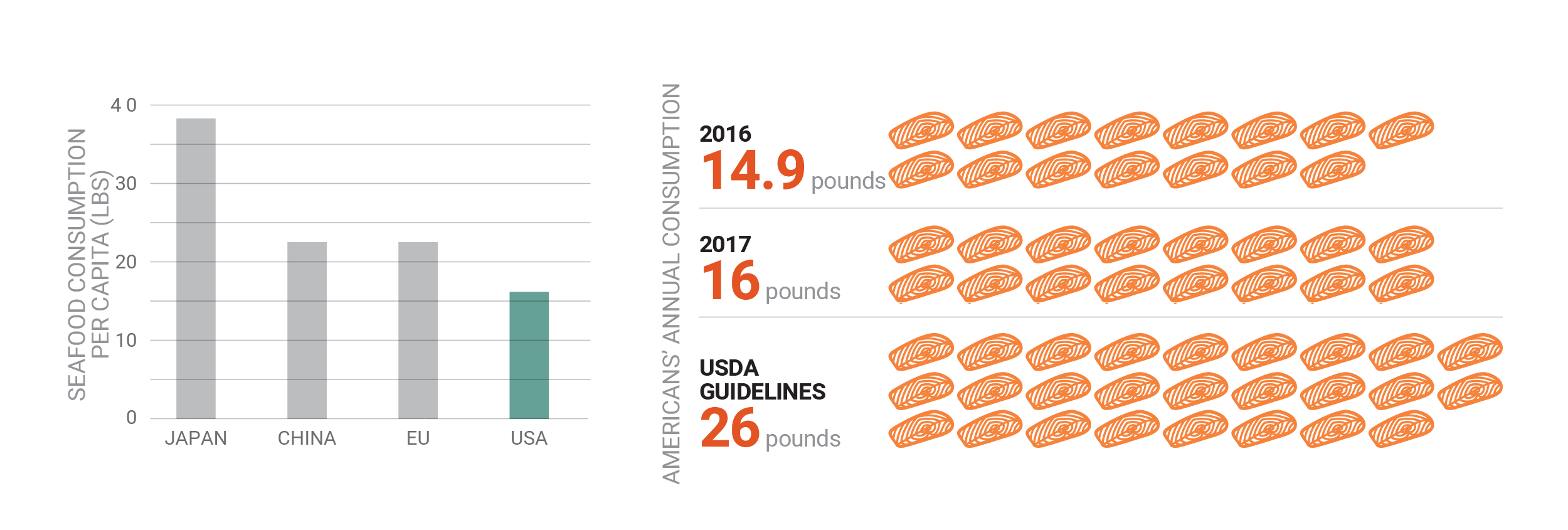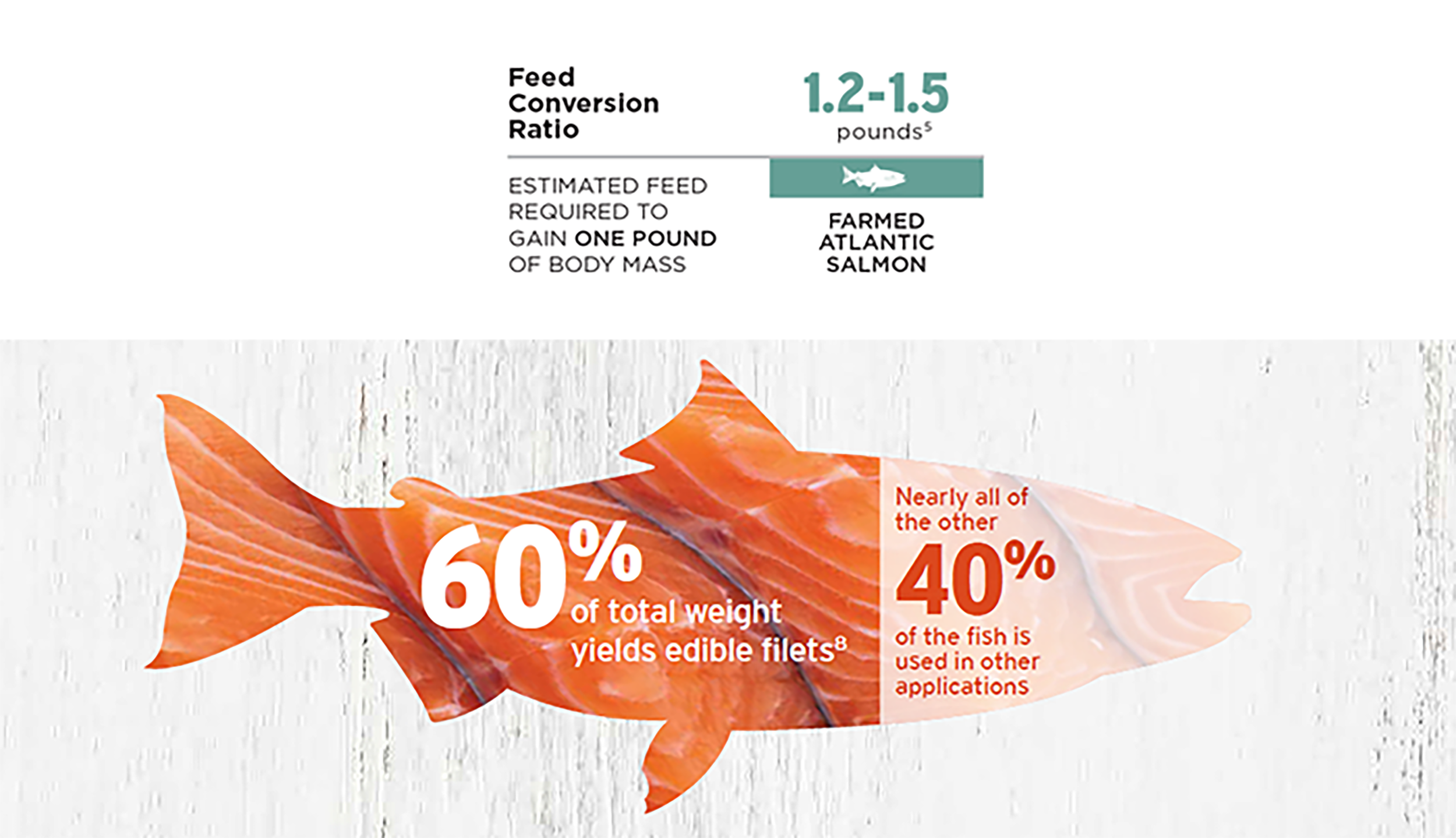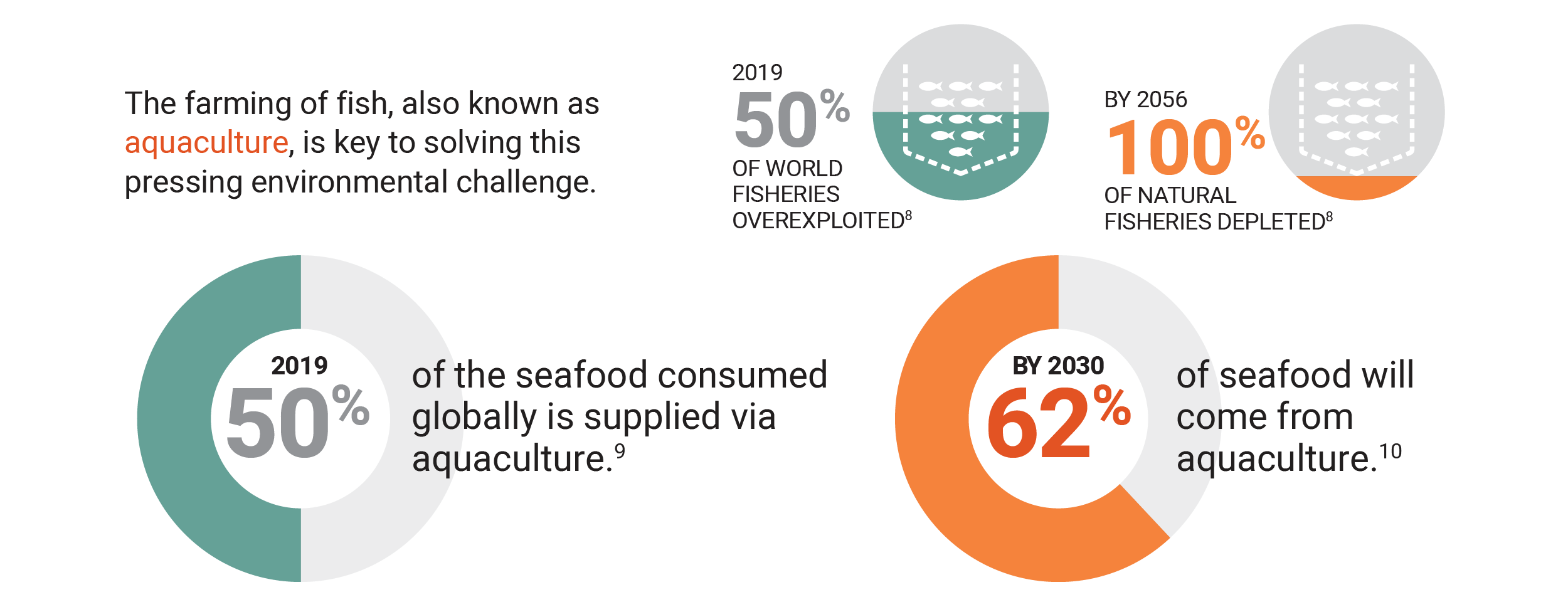1 Food and Agriculture Organization of the United Nations 2018 Report on the State of World Fisheries and Aquaculture. (n.d.). Retrieved July, 2019, from http://www.fao.org/3/i9540en/I9540EN.pdf
2 Fish to 2030: Prospects for Fisheries and Aquaculture. (n.d.). Retrieved July, 2019, from http://www.fao.org/3/i3640e/i3640e.pdf
3 Guillen, J., Natale, F., Carvalho, N., Casey, J., Hofherr, J., Druon, J., . . . Martinsohn, J. (2019). Global seafood consumption footprint. Ambio, 48(2), 111-112. Retrieved July, 2019, from https://link.springer.com/article/10.1007/s13280-018-1060-9.
4 Fisheries of the United States, 2017 Report. (2018, December 12). Retrieved July, 2019, from https://www.fisheries.noaa.gov/resource/document/fisheries-united-states-2017-report
5 2015-2020 Dietary Guidelines. (2015, December). Retrieved July, 2019, from https://health.gov/dietaryguidelines/2015/guidelines/
6 Bourne, J., Jr. (n.d.). How to Farm a Better Fish. National Geographic. Retrieved July, 2019, from https://www.nationalgeographic.com/foodfeatures/aquaculture/
7 Sharpless, A., & Evans, S. (2013). The perfect protein the fish lovers guide to saving the oceans and feeding the world. Emmaus, PA: Rodale.
8 International Salmon Farmers Association 2018 Report. (n.d.). Retrieved July, 2019, from https://sjomatnorge.no/wp-content/uploads/2018/06/ISFA-Report-2018-FINAL-FOR-WEB.pdf
9 NOAA Fisheries Aquaculture. (n.d.). Retrieved July, 2019, from https://www.fisheries.noaa.gov/topic/aquaculture 10 Why It Matters – Global Aquaculture Alliance. (n.d.). Retrieved July, 2019, from https://www.aquaculturealliance.org/what-we-do/why-it-matters/




